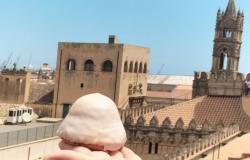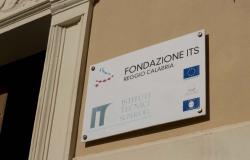And bus of Autolinee Toscane, with difficulty, tries to enter Bologna Street after the climb up Via Salviati. Not even room for a pin. Let alone a maneuver. From the north, you can’t see the tail end of the glittering snake of cars descending toward the city, honking their horns.
Il garrison of firefighters does everything he can to give directions. A worried officer grabs his cell phone and calls the station: “We need to increase the signage.” Via Faenza is the only alternative. A road that, approaching Cure, practically becomes a “tunnel”, with alternating one-way sections. It is taken by storm. Vehicles mount the sidewalks with their wheels. The air becomes heavy: a corridor of smog. Just a few flashes from yesterday.
The Publiacqua workers have placed the barriers in via Bolognese at 10 am, an hour behind schedule, after a long meeting between traffic police, Scaf and Autolinee Toscane to iron out the last details on traffic management. This first tranche of work on the aqueduct will continue until July 16th.
Il second batch from July 29th to September 10th. The current construction site does not occupy more than 50 meters, between via di Montughi and via della Pietra, but they make the difference. Surely for the «poor» Mirabilia bar, «imprisoned» between the fences: “It will be tough,” says Domenico Di Cicco from behind the counter, “We work a lot with the passage of cars, thousands a day: at lunchtime we risk remaining deserted, not to mention the difficulties for deliveries.”
Things are going a little better for residents: temporarily they lose a bus stop, some parking spaces, they will have to put up with the noise. But in the long run they will avoid the inconvenience of the continuous breakdowns of the pipes. And in the meantime, at least, they can get closer to the “dead end” to go home and park. The others, that is who uses via Bolognese as a route to reach Florence or leave the city, they must instead use the alternative road system, if they do not want to run into difficult U-turns. From Trespiano, turn downhill onto Via Salviati, then take the Faentina at Ponte alla Badia. Those going in the direction of Pratolino are forced to always take the Faentina and do the reverse route, that is, uphill on Via Salviati, in order to bypass the construction site and get back onto the Bolognese.
There are many yellow signs indicating the closure of the important road. The electronic displays – like the one on Via Mafalda di Savoia – continually relaunch the warning. And yet, as told, heavy congestion can be seen after just a few minutes from the start of the measure. Which also involves public transport. Massimo Milli of Faisa-Cisal speaks of «significant slowdowns for line 25, both in the Cure-Faentina area and on the Salviatino bottleneck». Publiacqua has decided to work in the summerto have less of an impact on the lives of students and commuters. «But we are no longer in the 60s, when everyone went on holiday for two months – says the mayor of Borgo San Lorenzo, Leonardo Romagnoli — Other solutions should have been found, there was a lack of coordination.”
And the mayor explains, in detail, what will happen: «The Faentina state road, which will be overloaded, also has two construction sites and a narrowing. It should have been fixed before, knowing about the Publiacqua construction sites. Then, in August, it will be in conjunction with the works on the Bolognese even the closure for 20 days of the Faentina railway linedespite our requests for night or time slot work. The main alternative for commuters will remain the train on the line to Florence via Pontassieve: an hour and a quarter of travel instead of 40 minutes…».





